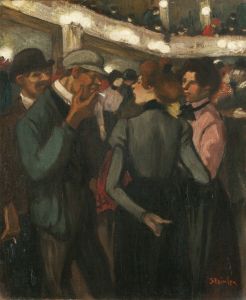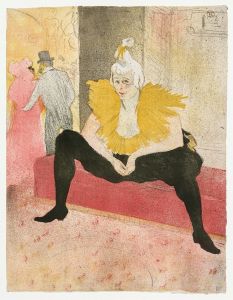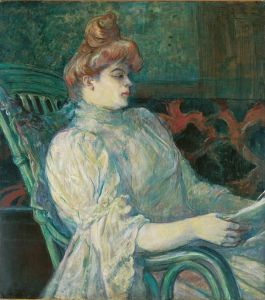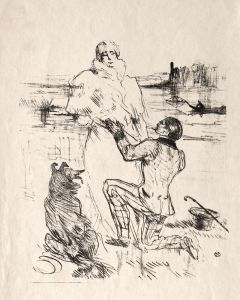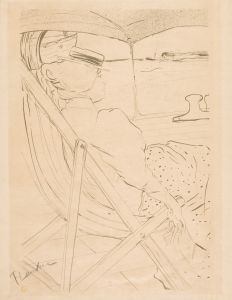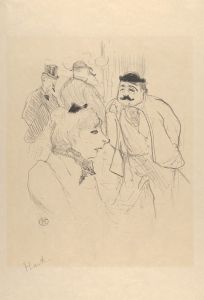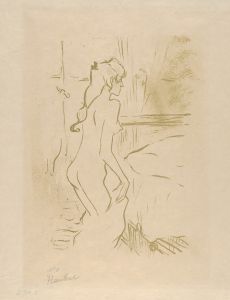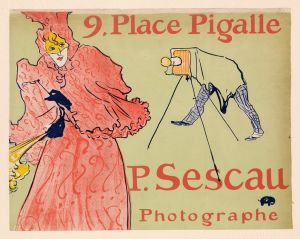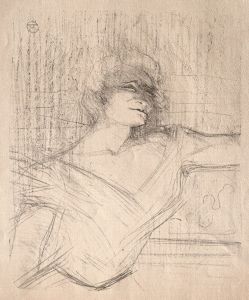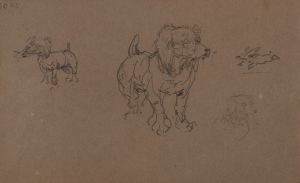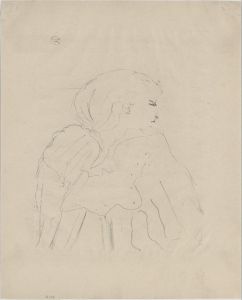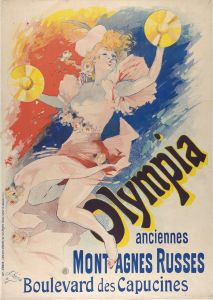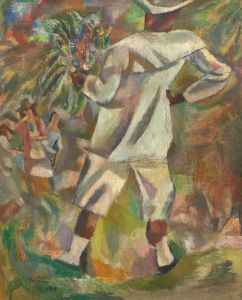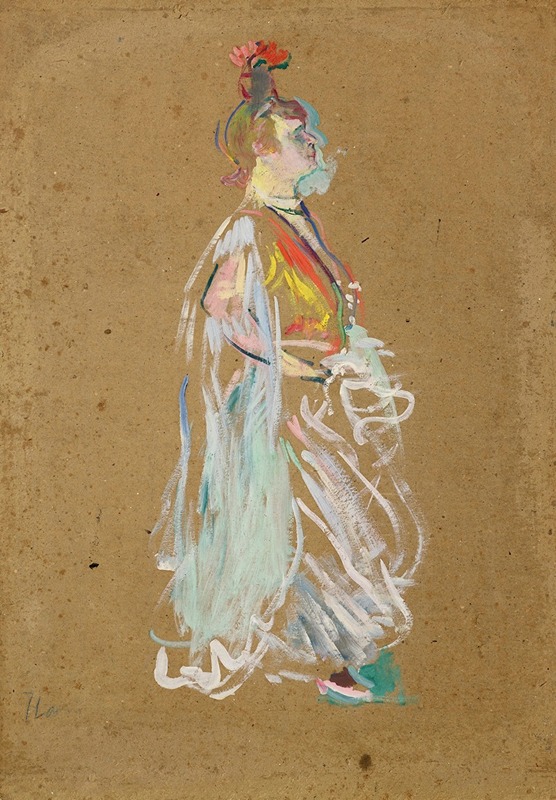
La Goulue en Almée
A hand-painted replica of Henri de Toulouse-Lautrec’s masterpiece La Goulue en Almée, meticulously crafted by professional artists to capture the true essence of the original. Each piece is created with museum-quality canvas and rare mineral pigments, carefully painted by experienced artists with delicate brushstrokes and rich, layered colors to perfectly recreate the texture of the original artwork. Unlike machine-printed reproductions, this hand-painted version brings the painting to life, infused with the artist’s emotions and skill in every stroke. Whether for personal collection or home decoration, it instantly elevates the artistic atmosphere of any space.
Henri de Toulouse-Lautrec, a prominent French painter known for his vivid portrayal of Parisian nightlife in the late 19th century, created the artwork "La Goulue en Almée." This piece is part of his extensive body of work that captures the vibrant and often bohemian atmosphere of the Montmartre district in Paris, where he spent much of his career.
"La Goulue en Almée" features Louise Weber, known by her stage name La Goulue, who was a famous can-can dancer at the Moulin Rouge. La Goulue was a central figure in the Parisian entertainment scene during the Belle Époque, and her performances were renowned for their energy and audacity. Toulouse-Lautrec frequently depicted her in his works, capturing her dynamic presence and the essence of the lively cabaret culture.
In this particular painting, Toulouse-Lautrec portrays La Goulue in the guise of an "almée," a term used to describe a type of dancer or entertainer in the Middle East, often associated with traditional and exotic performances. The choice to depict her as an almée reflects the period's fascination with Orientalism, a trend in Western art and literature that romanticized and often misrepresented Eastern cultures.
Toulouse-Lautrec's style is characterized by his use of bold lines, expressive forms, and a keen eye for capturing the spirit of his subjects. In "La Goulue en Almée," these elements are evident in the way he renders La Goulue's figure and costume, emphasizing her theatricality and the exotic theme of the performance. The painting likely employs a vivid color palette, typical of Toulouse-Lautrec's work, which adds to the sense of movement and liveliness.
The artist's relationship with his subjects was often personal and complex. Toulouse-Lautrec was known for his ability to depict the personalities and emotions of the people he painted, and his works often reveal a deep empathy and understanding of the performers and patrons of the Parisian nightlife. His depictions of La Goulue, in particular, highlight her as both a performer and a person, capturing her charisma and the cultural milieu she inhabited.
Toulouse-Lautrec's works, including "La Goulue en Almée," played a significant role in shaping the visual culture of the Belle Époque. His art provides a window into the social dynamics and entertainment practices of the time, offering insights into the lives of performers and the audiences who flocked to venues like the Moulin Rouge.
Today, Toulouse-Lautrec is celebrated as a master of Post-Impressionism, and his works continue to be studied and admired for their innovative approach and their vivid portrayal of a bygone era. "La Goulue en Almée" stands as a testament to his artistic vision and his ability to capture the essence of his subjects with both sensitivity and flair.





